Ultimate Guide to Hammock Camping: Setup, Sleep, Packing List
Anyone can camp in a tent, right? In this post, you’ll learn how to go camping with a hammock. This ultimate guide covers everything you need to plan and have a successful hammock camping trip.
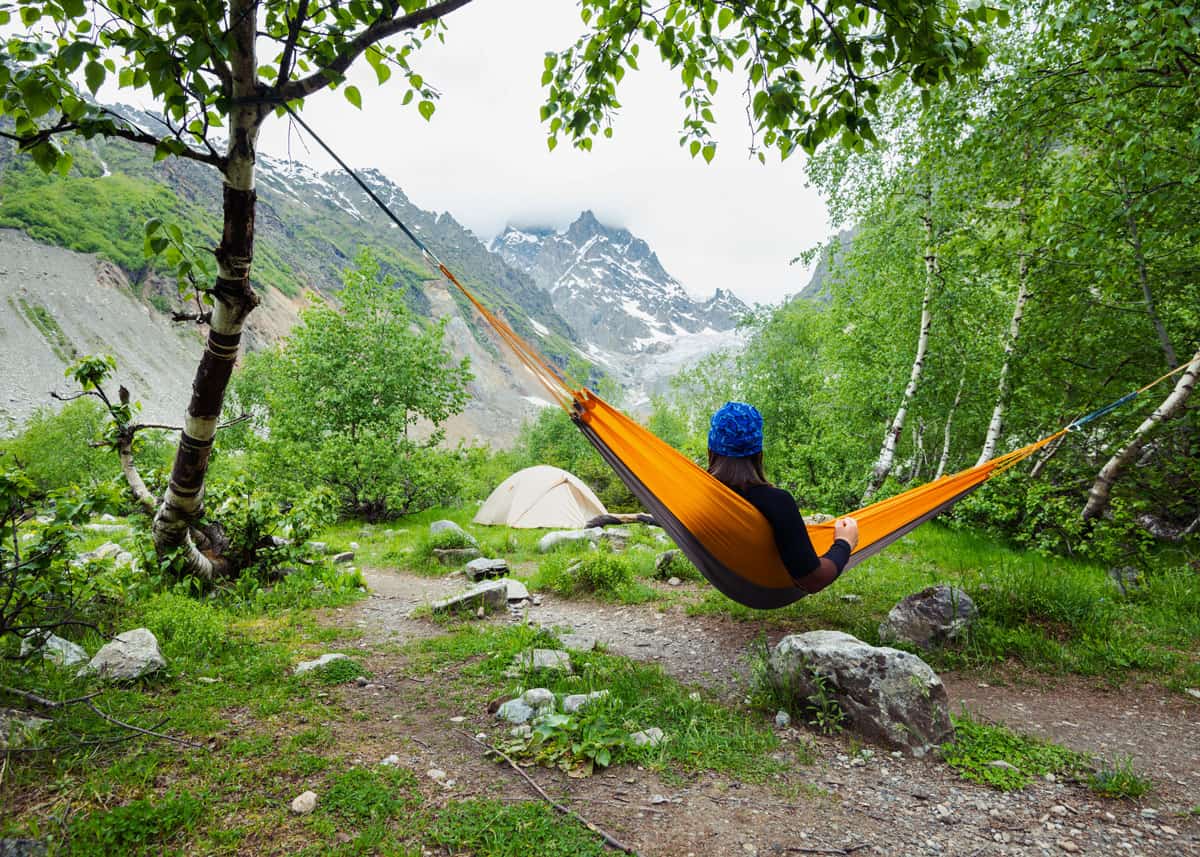
Ultimate Guide to Camping With a Hammock
I know this might come as a shock, but a tent is not the only way to camp.
There is a growing group of camping converts switching to hammocks over tents.
You might have noticed them at campsites before. They’re the ones that look better slept and aren’t hobbling around nursing various aches and pains like the rest of camp.
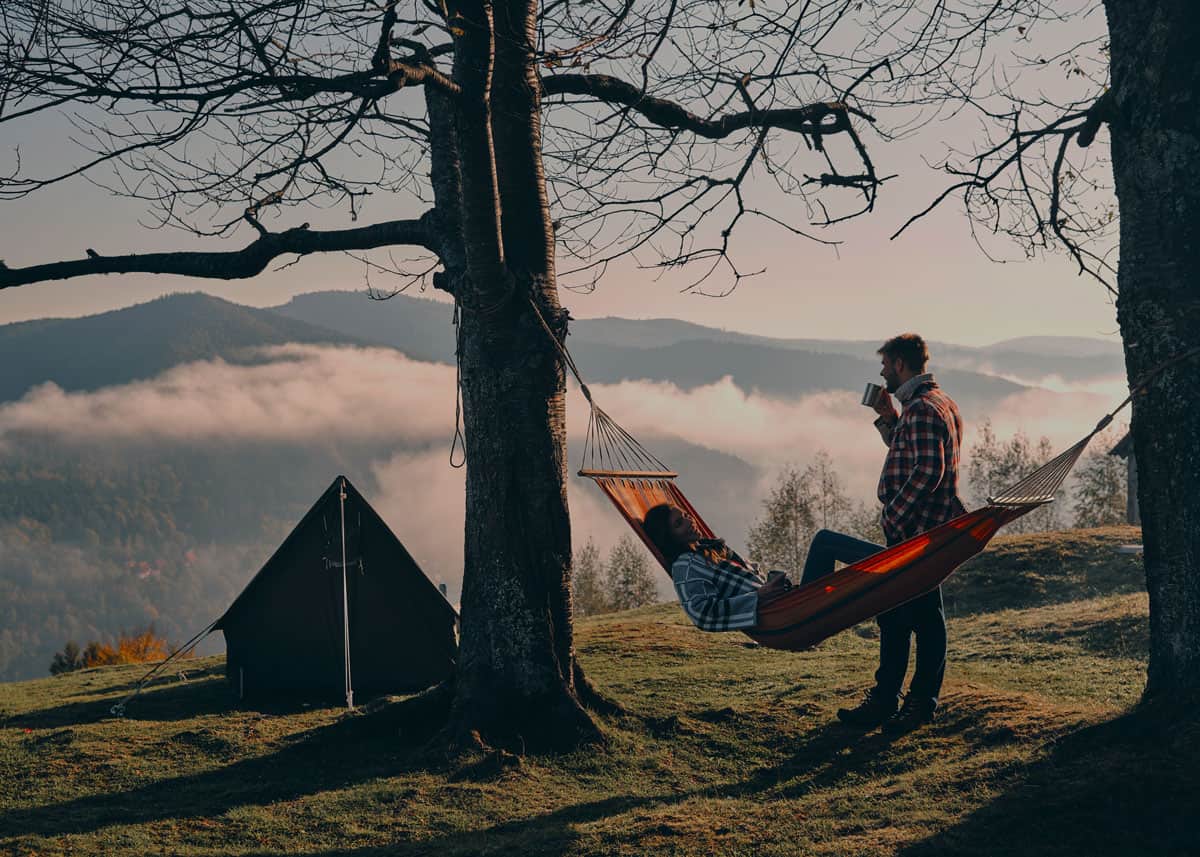
Planning a campfire? Check out 6 Ways to Start a Campfire
1. How to Set Up a Hammock (10 Things)
- Strap well and strap right: Make sure you do it right, and make sure you do it well. If your straps and webbing are not connected securely to the trees, you will fall. The easiest way to strap is to purchase some tree straps if they do not come with your hammock anyway. A further benefit of tree straps is that they will avoid damaging the trees.
- Lack of trees: This is one major issue, but if you have your car, your roof rack can provide a perfect second “tree” if needed.
- Webbing straps: When choosing your webbing straps, try to avoid nylon as this will stretch and sag during the night. Choose polyester and polypropylene.
- Angle of suspension: Your suspension should be at about a 30-degree angle from ground level to avoid too much pressure on the straps and to ensure the best “hang”
- Look for a deep sag: A hammock should be high at the ends and low in the middle. This will ensure it is near to impossible to accidentally fall out.
- The height is important: Keep the bottom of the hammock at about chair height. You do not need to pitch it very high, the straps should be no more than 6-12ft from the ground.
- Distance between trees: Choose trees that are approximately 12 to 15ft apart, or 6 steps.
- Raise your foot end higher: If you can raise your foot end 8-10 inches higher than the other end, this will prevent your heavier torso end from slipping into the middle of the hammock. This will make for a more comfortable night’s sleep.
- Tie a drip line to your suspension: This is to avoid dew or rainwater running down onto your hammock and making it wet.
- Correctly position your tarp: Once your hammock is in place, tie the ridge line of your tarp at the same position on the tree as your hammock straps. Your hammock will come down slightly when you sit in it but your tarp will stay as it is. Ensure that the ridge line is secure and straight and not sagging. Once this is done, place your tarp over the ridge line and then secure the ends of the tarp to the ground with stakes.
And if it might rain, here are some tips to help you stay dry.
Thinking about going camping this winter? Check out these winter hammock camping tips.
2. How to Sleep in a Hammock
If you’ve done all the right prep, brought the correct gear, and hung the hammock well, then you’ve gone a long way to ensuring yourself a comfortable night.
Hammock camping is an art. And because it’s different from sleeping on a flatbed as most of us do every night, a few tips will help.
It’s important to understand how you can avoid common issues and complaints in order to ensure you get the best possible night’s sleep.
- Don’t hang the hammock too tight: Many beginners think this is an obvious way to lie flatter, but this is not true. The hammock will only tighten around you even more and make diagonal sleeping difficult/impossible.
- Sleep on the diagonal: This will avoid “shoulder squeeze” as well as sleeping in a curved shape like a human banana, which will lead to back pain. Try and imagine yourself lying at a 30-degree angle from each side of the hammock.
- Tossing and turning is encouraged: You don’t need to lie like a corpse in one position. When you are first starting in a hammock, and are suitably diagonal, try out different positions to see what is most comfortable.
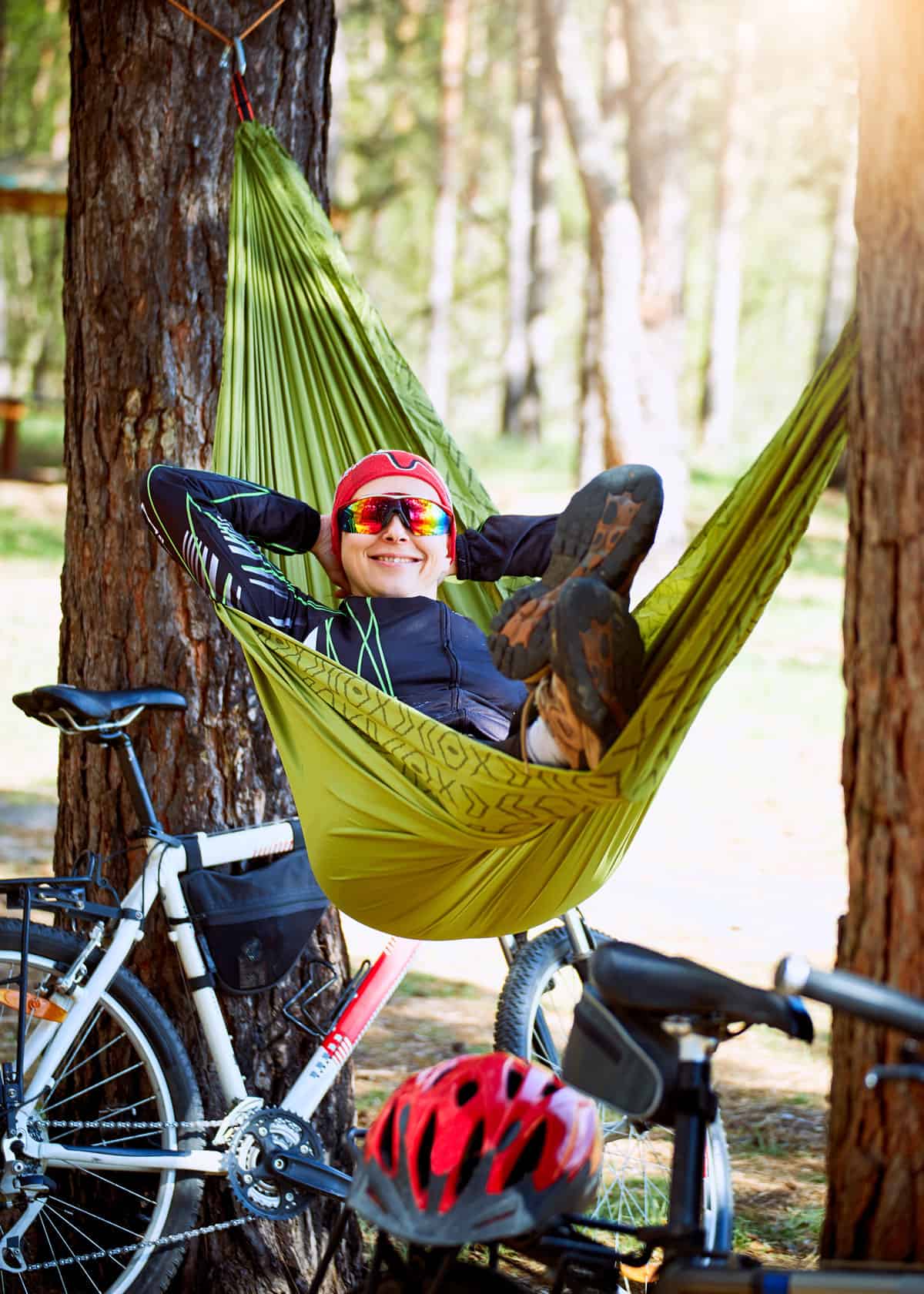
3. Responsible Hammock Camping
Whenever you are hammock camping, ensure that you camp responsibly!
- Always make sure you read local camping regulations. Just because there are lots more camping location options open to you as a hammock camper doesn’t mean that you are allowed to use them!
- Always use tree straps. This prevents unnecessary damage to the trees.
- Inspect your site before you leave to ensure that you leave no trace.
- Take your hammock down every time you leave camp.
4. Who Hammock Camping Isn’t For
There are obviously some disadvantages to hammock camping and some circumstances that will not suit hammock camping.
- In my experience, it is not possible to comfortably sleep with a dog in a hammock.
- You may be able to accustom a smaller dog to sleeping with you, perhaps on you, or in a storage area of your hammock, but the likelihood is that they may want or have to sleep on the ground. If you are not comfortable with such an arrangement, then hammock camping may not be for you.
- The same will apply to young children. If you are traveling with a young baby, you probably don’t want to share a hammock with them and risk them getting caught underneath you or in the hammock material.
- Same applies to young children; you might be better getting a family tent and knowing that everyone is together and safe and babies are in travel cots.
- And finally, you’ll need a level of physical ability to setup and enter/exit the hammock.
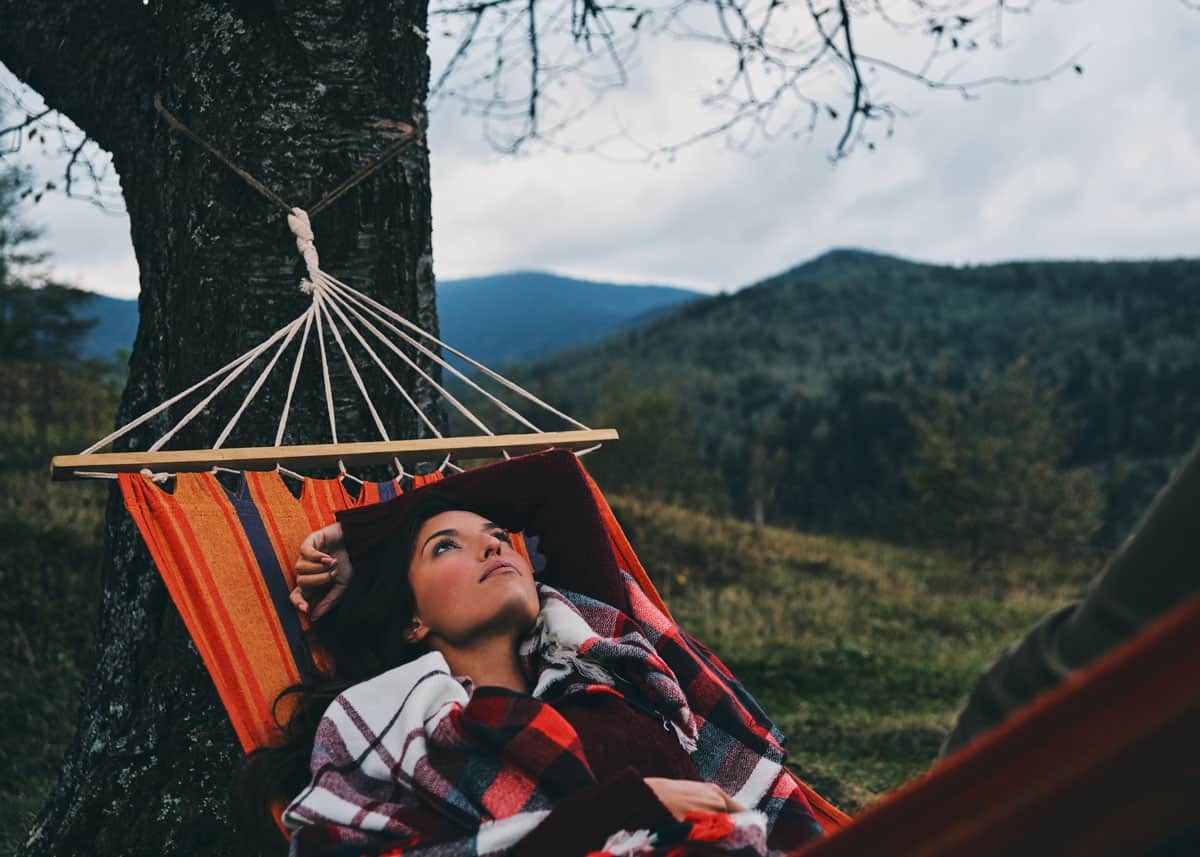
5. How to Choose a Hammock for Camping (6 Things)
Here are factors to consider when choosing your camping hammock.
- Hammock Width: Solo or Double? If you are sleeping solo, it might be best to keep things as narrow as possible; keep in mind that the wider it is, the more it will wrap around you which can bring on feelings of claustrophobia if this is the kind of thing that gets to you. Hammock widths can vary from 4 to 8.5 feet.
- Hammock Length: Length is not so much a concern unless you are incredibly tall, in which case, opt for a model longer than 8 feet.
- Hammock weight capacity: Most hammocks are fairly generous in the weight capacity. Be sure that the model you’re considering matches your specific needs.
- Hammock weight: The weight of the hammock will depend on the material used, which tends to vary on the hammock type; whether it is designed to be lightweight, or durable, or more for comfort, and whether it is for short or longer-term use. Volume of the packed hammock is also a factor. Some features (built-in mosquito nets) and materials (cotton/canvas) add significant bulk to a packed-down hammock.
- Hammock attachment points: Look for a hammock with many attachment points as this allows flexibility in use of your suspension system.
- Types of Hammocks: There are three primary hammock types. More on this next.
3 Types of Hammocks
Here are the three types of camping hammocks.
- Parachute models: These are hammocks made out of parachute nylon. Generally, they’re great for lounging in, and sleeping for a single person or a double person depending on their size. They generally come with integrated suspension systems which makes them a great starter hammock as they are easy to set up and take down. The parachute nylon they are made from is comfortable, soft, durable and has a slight stretch.
- Ultralight models: These hammocks may sacrifice some comfort and durability of the open models for lightweight and small sizes. These hammocks are for the trekker who wants to go extremely lightweight and they will be perfect for certain circumstances, like trekking the Appalachian Trail. Hikers love lightweight gear.
- Expedition models: These hammocks are designed for more extreme conditions, and for longer trips where you will be spending extended periods of time in your hammock. They often have rain flys/tarps or mosquito nets as standard, they have many added comforts like integrated storage space and are easy to accessorize. They are more comfortable than their counterparts but are also heavier and more expensive.
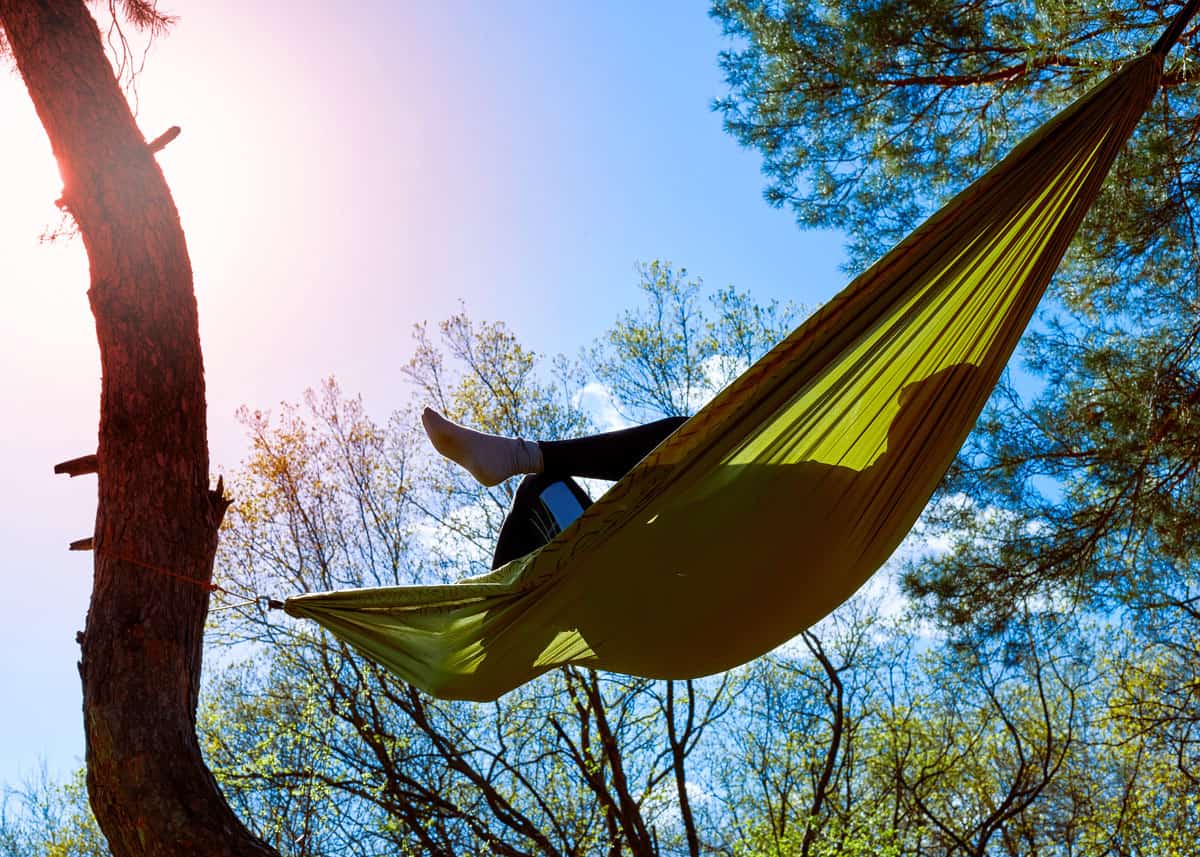
6. A Great Camping Hammock
The Expedition Trekker is a great option for hammock camping. The Hennessy Hammock Expedition Series has been around for years.
Check the current price on Amazon.
This hammock is described as a “complete, engineered shelter system for one price”. Hennessy promotes “Leave No Trace” and provides webbing straps to assist with this. It comes with built-in mosquito netting, a detachable rain fly, support ropes, and webbing straps.
Ultimately, there are hundreds of hammocks on the market and each will provide different benefits depending on your particular camping needs and sleeping preferences.
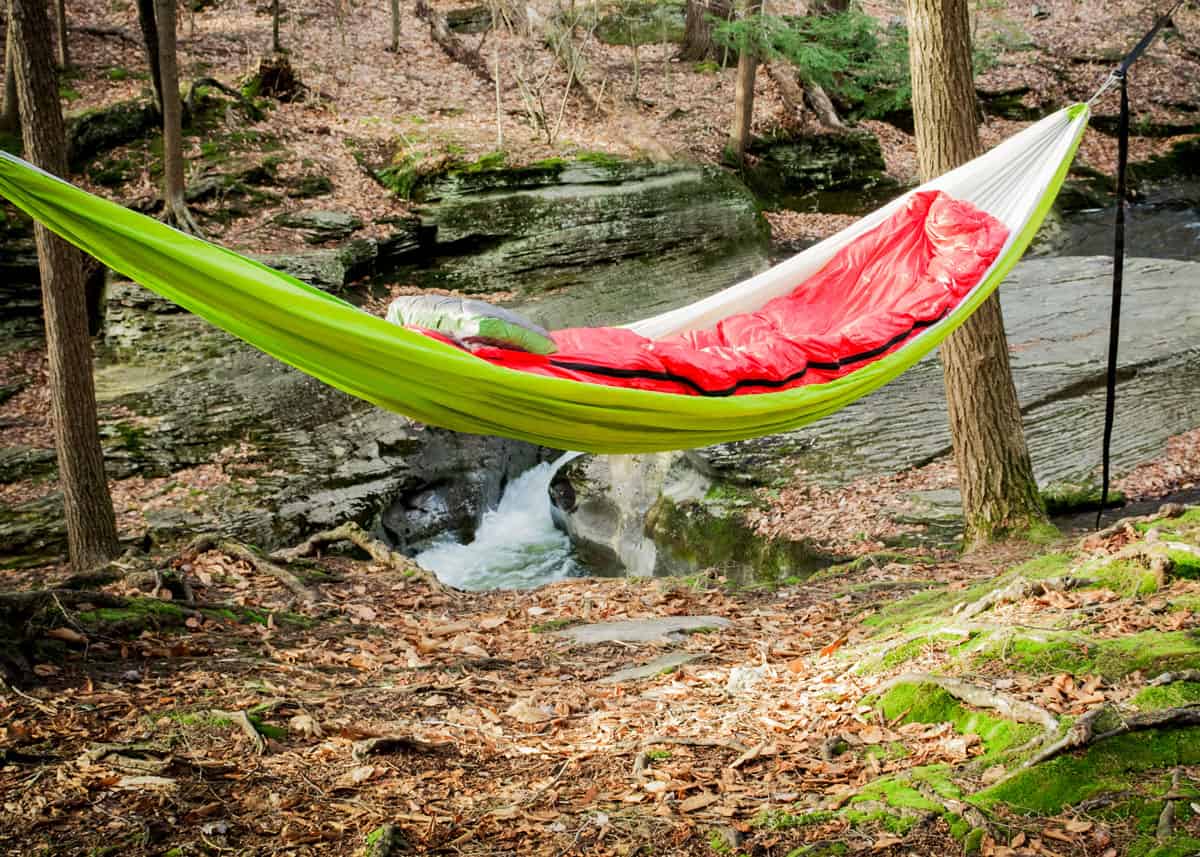
7. How to Pack for Hammock Camping: 8 Things
All that being said, hammock camping success is all about what you pack and how well you pitch. In the summer, you may be able to go very light with just your hammock, if you are guaranteed dry, hot weather. In the winter, you will need to accessorize!
How to pack: In comparison to tent camping, you will find that you will be cooler in the night than in a tent due to the air passing over and under you.
Even in the warmer months, you will need a sleeping bag and may need a more insulated one than you are used to.
You will always need to take the following items on your camping trip no matter the conditions:
- Good quality hammock: This isn’t the time to go budget. It’s worth getting a quality hammock. It will last multiple seasons and will make your trip much more comfortable.
- Good quality straps: Choose straps that will be easy for you to adjust and set up, and make sure they are long enough to accommodate bigger trees or areas where trees are sparse and wider apart.
- Carabiner: Quality carabiners will connect your straps to your hammock and ensure that your hammock stays safely suspended while you sleep. They should be rated to at least 1,000 lbs.
- Sleeping bag: The sleeping bag should be appropriate to the season and take into consideration that you will be cooler in a hammock than in a tent. Some people recommend mummy-shaped sleeping bags for hammocks to avoid edges and corners poking you in the face in the middle of the night.
- Overquilt and Underquilt: If the weather is cold, you will probably want this in addition to your sleeping bag.
- Sleeping pad: This is a given all year round for comfort as standard. Some only use this in cooler weather as insulation and protection from “Cold Butt Syndrome” (CBS).
- Mosquito net: They often come fitted to camping hammocks as standard. But if not, you will need to find and bring it on all spring and summer trips.
- Tarp: If your hammock doesn’t come with an integrated tarp, you’ll want to pick one up. More on tarps below.
Want extra protection against biting bugs? Check out the Campers Guide to Essential Oil Bug Repellent.
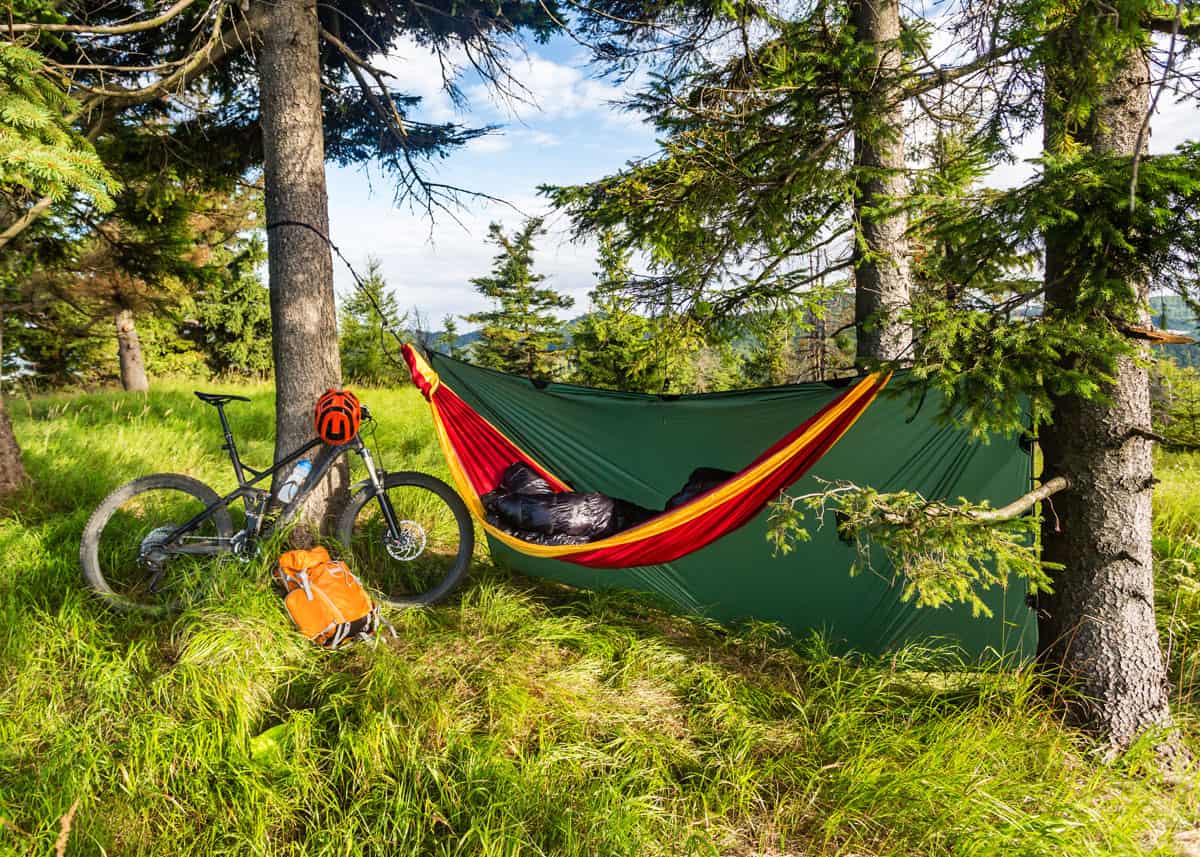
Tarps For Hammock Camping
A tarp is a great protection from wind, rain and snow, and also allows a bit of privacy. There are a variety of fantastic, lightweight and hardy tarps on the market so plenty of options to choose from. Types of tarp include:
- Asymmetrical: these are designed for hammock camping, but not so much for cold weather. These will provide the most minimal of cover and will be the most lightweight and easy to set up.
- Hexagonal: these provide slightly more cover than the asymmetrical due to their shape, and that they meet the ground at four points rather than two. They will only take slightly longer to set up and are slightly heavier.
- Rectangular: these are traditional tarps that you may find in many a garage across the world providing shelter for some garden machine or other. They are heavy, noisy and not designed for hammock camping specifically, but on the bright side they are widely available, cheap and can generally be staked to the ground.
- Tent tarps: If you are facing freezing temperatures and still venturing out in your hammock then these tent tarps are a great option. They essentially convert the space around your hammock into a tent and will reduce the airflow around you that may otherwise cause you to feel very chilly at night. The downside is that they take considerable time to set up and take down, but you will be toasty warm as a result.

Here are some other things that some hammock campers like to bring along.
- Inflatable pillow: Some people require some neck support while sleeping in a hammock while others don’t. On your first trip, it’s probably worth taking an inflatable neck pillow so you can try out both ways and see which you prefer.
- Foot mat: It might be worth bringing a small foot mat so that when you step out of your hammock you have something to step on rather than the forest floor, but it depends how minimal you want to be!
- Sandals: Can help to have some basic sandals for when you wake up for a trip to the bathroom in the middle of the night.
Want something that will double as slippers and waterproof hikers? See our Trail Guide to Dry and Healthy Feet.
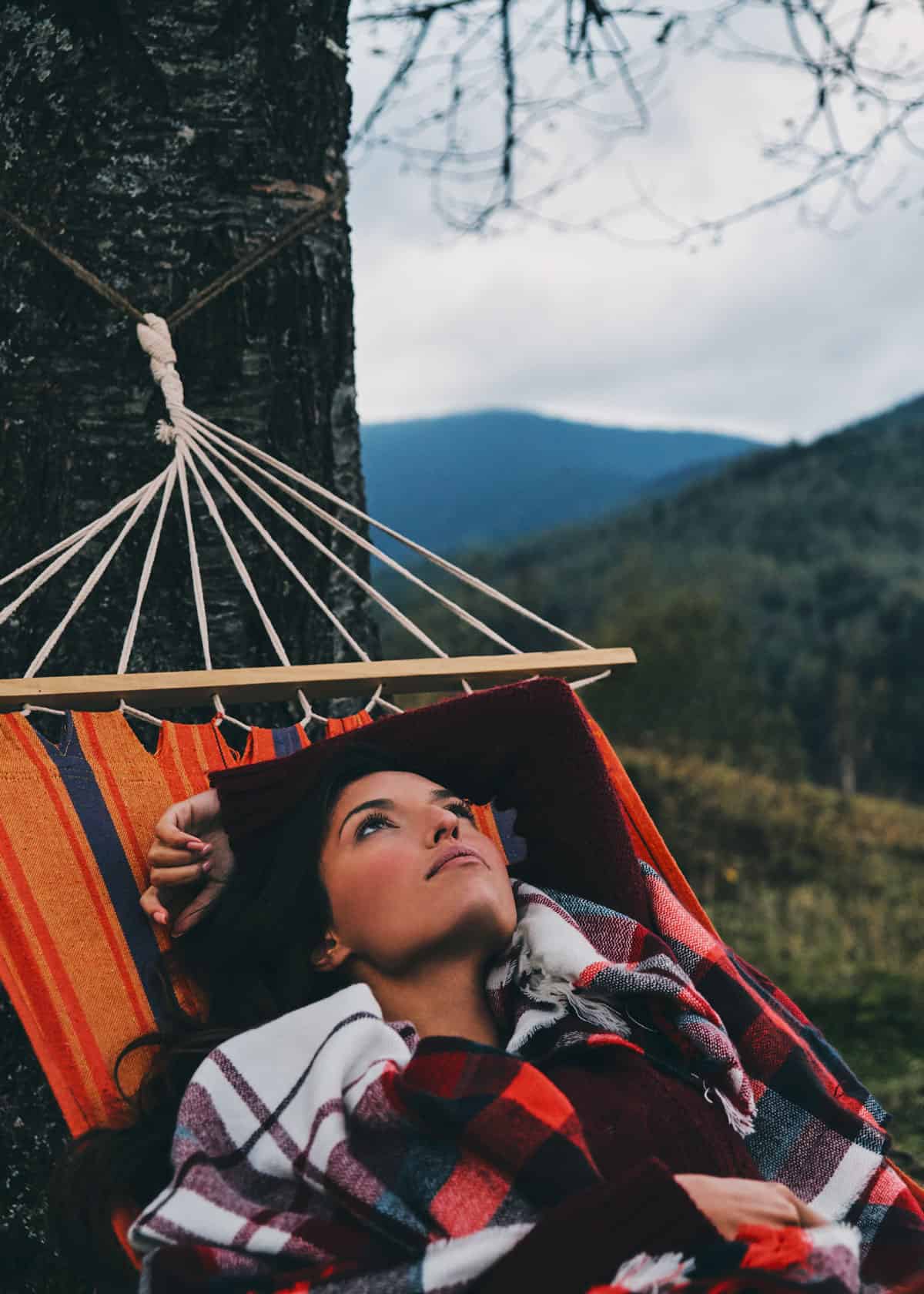
Your Turn
Are you planning your first trip camping with a hammock? Have a question or tip to share? Join me in the comments!
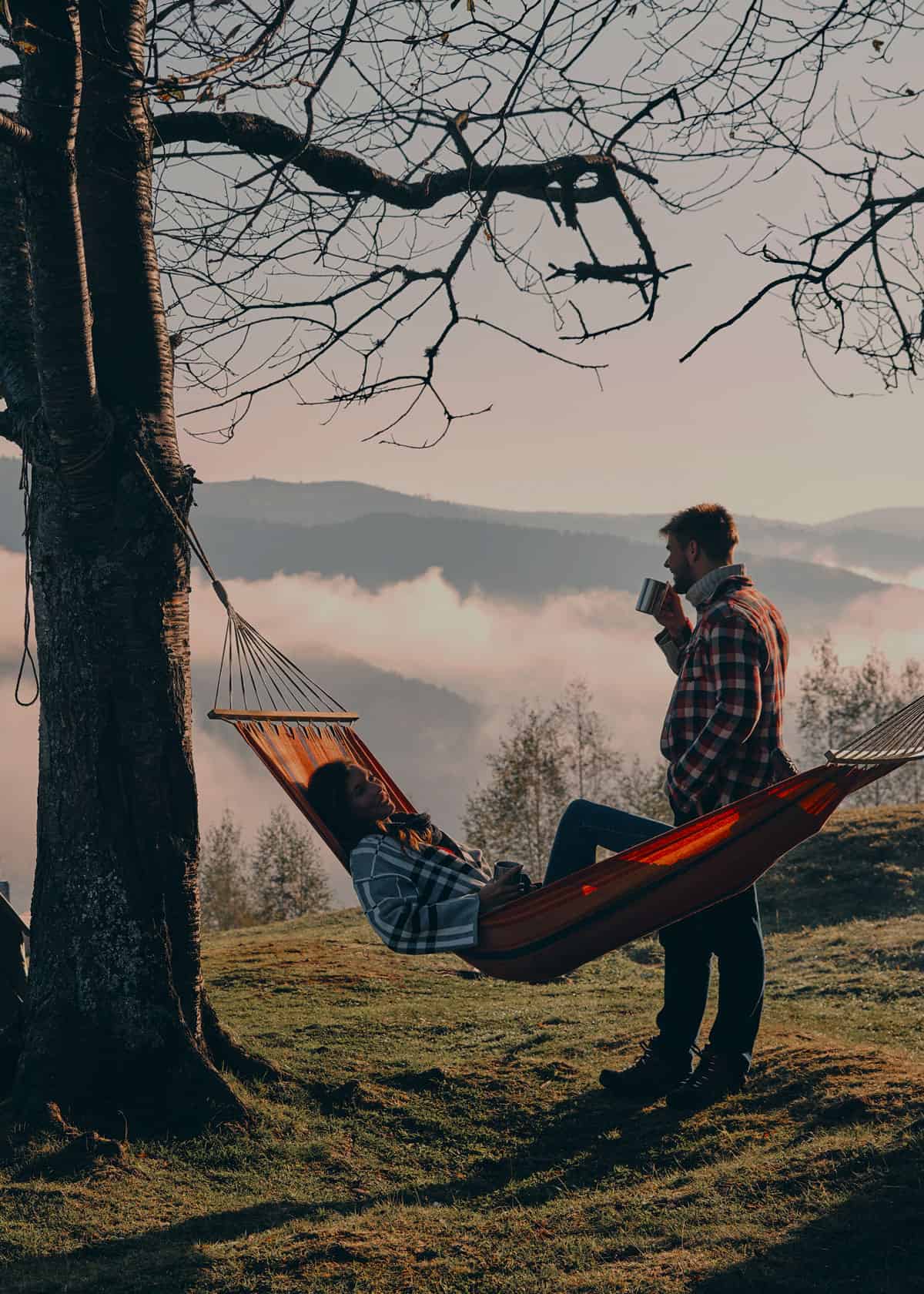


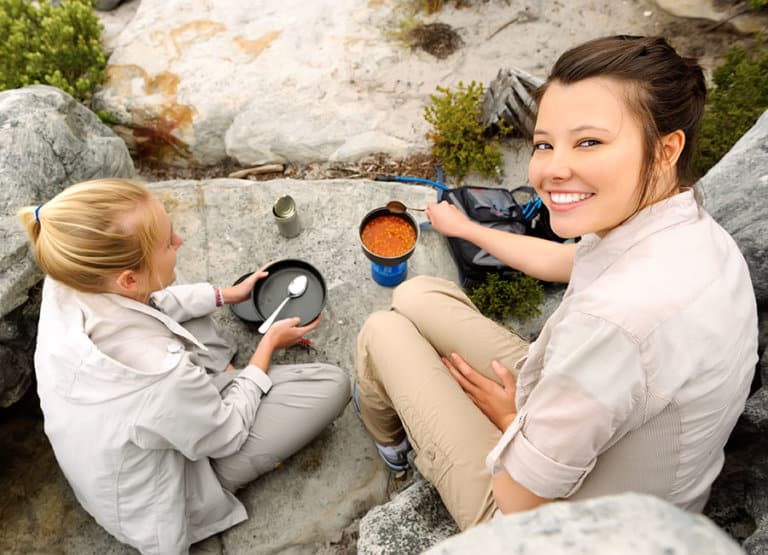
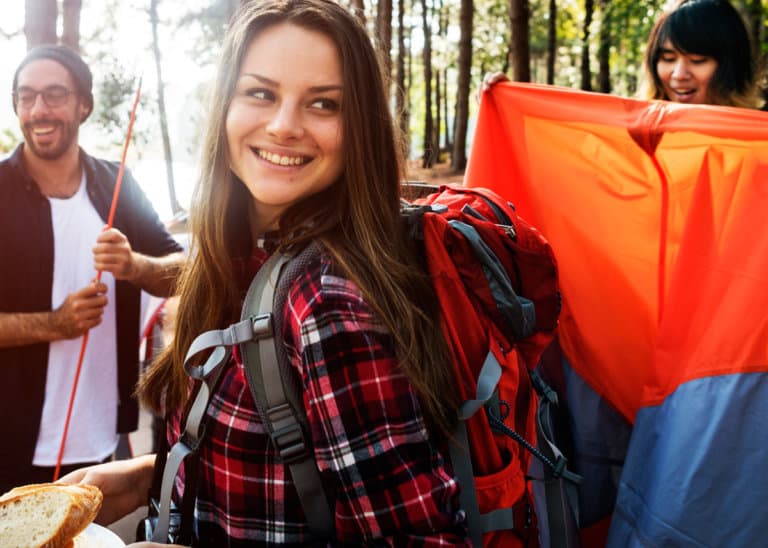

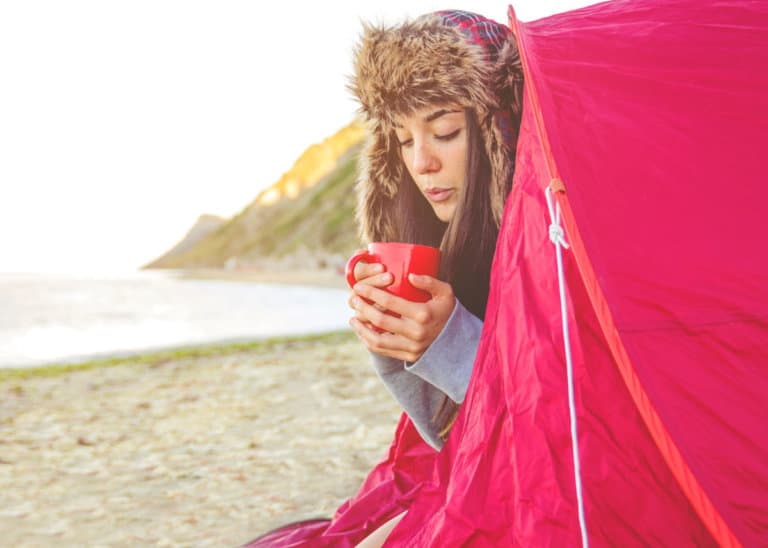
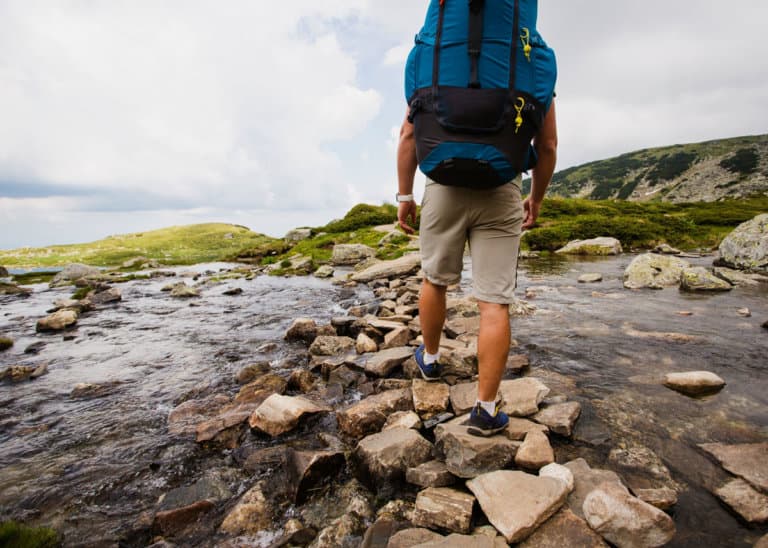
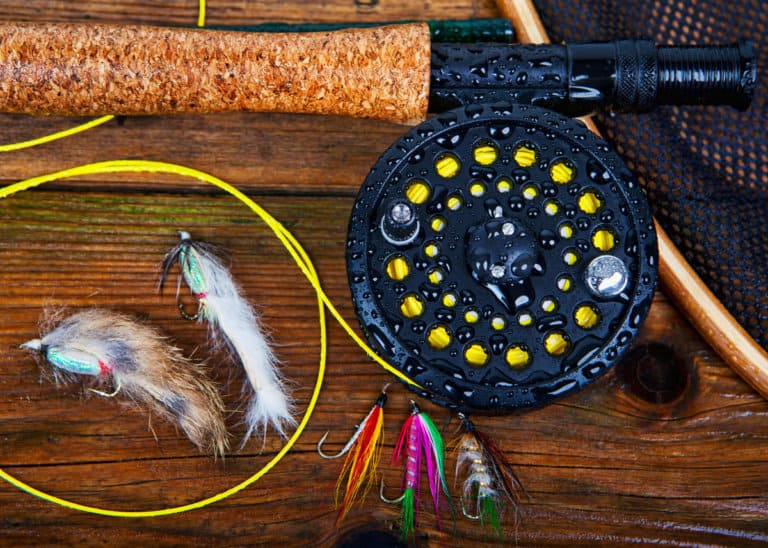
Talking about an ultimate guide, you got one right there! I like my hammock to be at least 10 feet long and 50 inches wide. That’s how I sleep the most comfortable. What is your recommendation for going to ground?